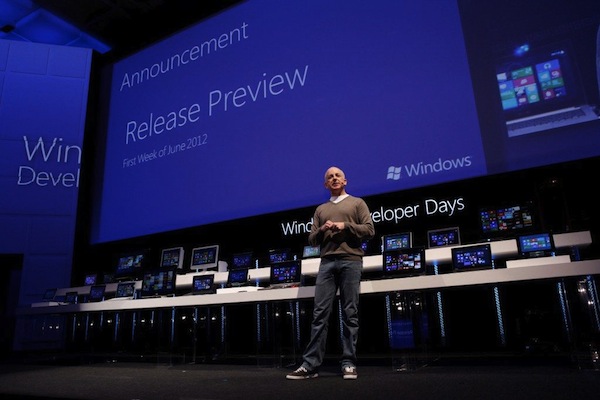If you don't like the direction Microsoft is taking Windows 8, tough luck, Team Sinofsky knows they have you

Choice. It’s something that all free people crave. We want the right to choose, whether it’s what we eat, where we live or how we arrange our furniture. Generally speaking, we don’t like being told what to do. Nor do we like it when some impersonal agency imposes its will upon our freedoms.
Case in point: Microsoft’s decision to force users to boot to the Windows 8 Start Screen. Instead of giving us the option (choice) of going directly to the desktop, Microsoft divisional president Steven Sinofsky and friends are saying it’s “their way or the highway”. Any attempts to deviate from their approved usage model will not be tolerated, and if you try to code around us, we’ll shut you down. Period.
Note that this isn’t the first time Microsoft has imposed its iron will with Windows 8. The company’s decision to retire the Start Menu in favor of a convoluted collection of “hot corners” and “hover actions” infuriated users of the various preview editions.
And when some enterprising rebels found a way to revive the still-present-yet-disabled Start Menu, Microsoft’s developer goon squads sprang into action: First attempting to block the workaround, and when that didn’t work, slamming the door hard by removing the “offending” code from Windows altogether.
Remember, the Start Menu was once the defining feature of Windows. Beginning with the Rolling Stones-themed “Start Me Up” campaign for Windows 95, the Start Menu has been the focal point of the Windows interface for an entire generation of users. To simply rip such a core feature out of the product, with no thought to legacy compatibility or user retraining costs, reeks of desperation.
And make no mistake: Microsoft is in a desperate place. The combination of iPad and BYOD has really rattled the software giant’s cage, and now it’s lashing out at the very user base that authored its ascendancy. Simply put, Microsoft needs to spread the UI-formerly-known-as-Metro gospel, and it can’t afford to waste time kowtowing to a bunch of disgruntled power users.
Besides, why should it? It’s not like we loyalists have any other option. As former Microsoft VP Paul Maritz explained while discussing the “Save XP” campaign in a private meeting during the 2008 Professional Developers Conference: Where else can they go?
In other words, if you don’t like the direction that Microsoft is taking Windows, well then, tough luck. Team Sinofsky knows they have you. As a Windows die-hard, you’ll whine and moan. Maybe you’ll even threaten to jump ship to Linux or the Mac. But at the end of the day, they’re confident you’ll never truly leave the Microsoft fold.
In fact, they’re counting on your passive compliance while they execute their master plan to transform the Windows ecosystem from a free and relatively open environment into the kind of walled garden that has made the fruity ones the darlings of Wall Street.
Unfortunately for Microsoft, history is rife with examples of totalitarian regimes that pushed their constituents too far. Eventually, the population revolts and those at the top of the food chain rarely survive the ensuing chaos.
Here’s hoping that enough of us vote with our wallets to ensure that version 9 (a.k.a. Windows' “Last Stand”) restores the kind of end user choice we’ve come to expect from our soon-to-be former software overlords.
